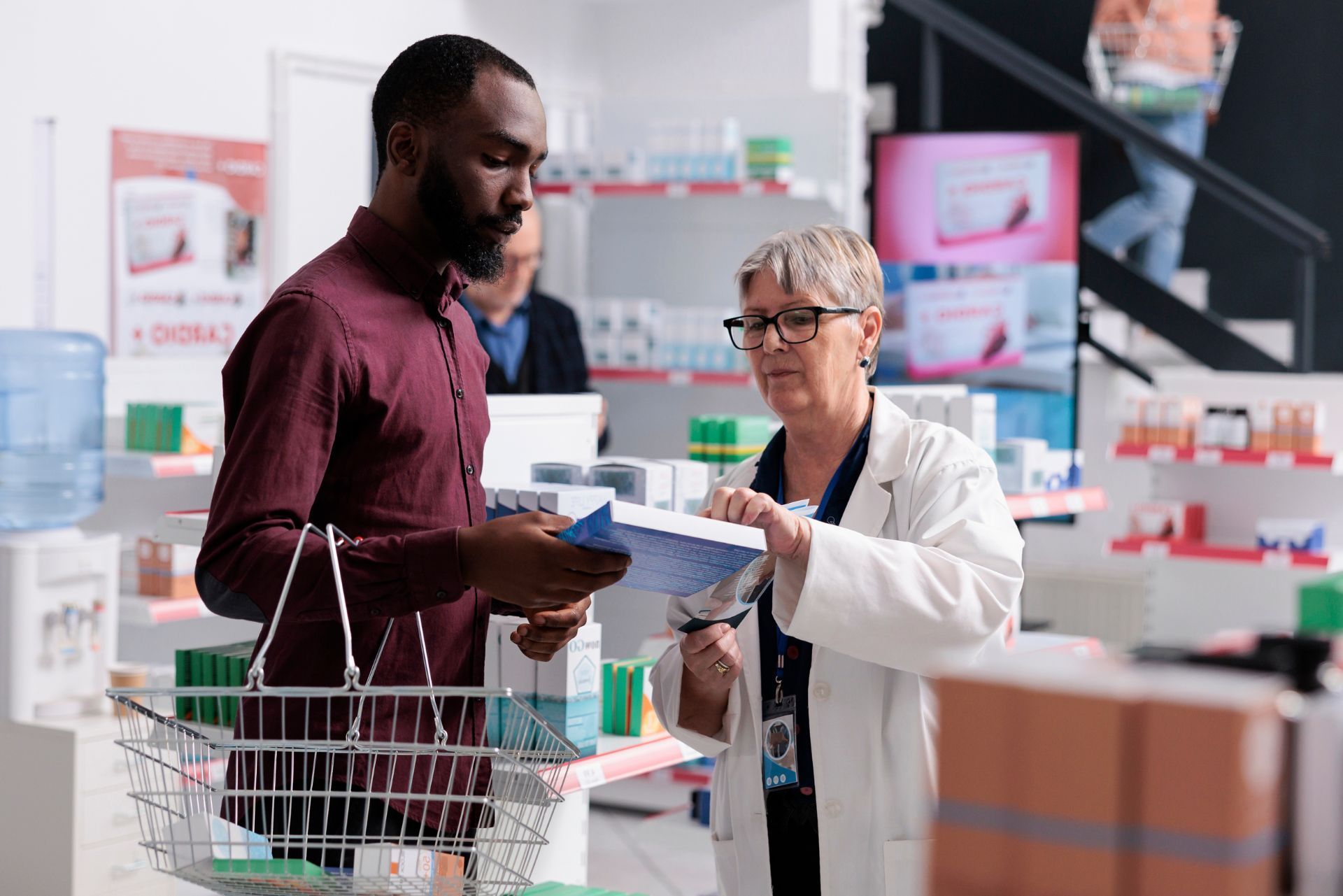Top 3 Recommended Policies

In the world of pharmaceuticals, ensuring the safe and secure transportation of products is paramount. This is where pharmaceutical transportation insurance comes into play. This specialized form of insurance is designed to protect pharmaceutical companies, distributors, and logistics providers from the myriad risks associated with transporting sensitive and valuable products. Understanding the nuances of this insurance can help businesses mitigate risks and ensure compliance with regulatory requirements.
Understanding Pharmaceutical Transportation Insurance
Pharmaceutical transportation insurance covers a wide range of risks that can affect the movement of pharmaceutical products. These products are often sensitive to temperature changes, humidity, and other environmental factors, making their transportation particularly challenging. This insurance is crucial for protecting against potential losses due to damage, theft, or spoilage during transit.
What Does Pharmaceutical Transportation Insurance Cover?
Typically, pharmaceutical transportation insurance encompasses several key areas of coverage:
- Theft and Loss: Coverage for stolen or lost products during transit.
- Damage: Protection against physical damage caused by accidents, mishandling, or environmental factors.
- Spoilage: Insurance against loss due to temperature fluctuations or other conditions that may compromise product integrity.
Each policy may vary in its specifics, so it is essential for businesses to carefully review their options and select coverage that meets their unique needs. Additionally, some policies may offer specialized coverage for high-value items or products that require strict temperature control, ensuring that even the most sensitive pharmaceuticals are adequately protected throughout their journey.
Why Is It Important?
The importance of pharmaceutical transportation insurance cannot be overstated. The pharmaceutical industry is heavily regulated, and companies are held accountable for the safety and efficacy of their products. A single incident of lost or damaged goods can lead to significant financial losses, legal repercussions, and damage to a company's reputation.
Moreover, as the global demand for pharmaceuticals continues to rise, the complexity of logistics and transportation increases. This makes having a robust insurance policy not just a good practice, but a necessary component of a successful pharmaceutical operation. The rise of e-commerce and direct-to-consumer shipping has further complicated the landscape, as companies must navigate varying regulations across different regions and ensure compliance while maintaining product integrity. In this environment, transportation insurance serves as a safety net, allowing businesses to operate with confidence and focus on delivering high-quality products to their customers.
Furthermore, the advent of advanced tracking technologies and temperature monitoring systems has transformed the way pharmaceutical products are transported. These innovations not only enhance the security of shipments but also provide valuable data that can be used to substantiate claims in the event of a loss. Insurers are increasingly recognizing the value of these technologies, which can lead to more favorable policy terms and potentially lower premiums for companies that invest in robust monitoring solutions. As the industry evolves, staying informed about the latest advancements in transportation and insurance will be crucial for businesses aiming to safeguard their products effectively.

Key Risks in Pharmaceutical Transportation
Several risks are inherent in the transportation of pharmaceutical products. Understanding these risks is essential for businesses to effectively manage their insurance needs.
Temperature Control Risks
Many pharmaceutical products, particularly biologics and vaccines, require strict temperature control during transportation. Failure to maintain the appropriate temperature can lead to spoilage and loss of efficacy. Insurance policies should address these specific risks, including coverage for temperature-controlled transport methods. Additionally, the use of advanced monitoring technologies, such as real-time temperature tracking devices, can provide an added layer of security. These devices not only alert transporters to temperature fluctuations but also create detailed logs that can be invaluable in the event of a claim, demonstrating compliance with temperature regulations throughout the shipping process.
Theft and Security Risks
Theft is a significant concern in the pharmaceutical supply chain. High-value products are attractive targets for criminals, and incidents of theft can result in substantial financial losses. Insurance policies should include provisions for theft, as well as recommendations for enhancing security during transportation. Companies can implement various strategies to mitigate these risks, such as employing GPS tracking systems, utilizing armored vehicles for transport, and training personnel in security protocols. Furthermore, collaboration with law enforcement and local authorities can help create a safer transportation environment, as they can offer insights into high-risk areas and emerging threats.
Regulatory Compliance Risks
Pharmaceutical companies must comply with a variety of regulations governing the transportation of their products. Non-compliance can lead to fines, penalties, and loss of product licenses. Insurance policies can help protect against the financial consequences of regulatory violations, but companies must remain vigilant in adhering to all applicable laws and guidelines. Regular audits and training sessions can be beneficial in ensuring that all employees are up-to-date on the latest regulations. Additionally, partnering with logistics providers who specialize in pharmaceutical transportation can enhance compliance efforts, as these experts are often more familiar with the nuances of regulatory requirements and can help navigate the complexities of international shipping laws.
Choosing the Right Insurance Policy
Selecting the right pharmaceutical transportation insurance policy requires careful consideration of several factors. Each business has unique needs and risks, and understanding these can help in making an informed decision.
Assessing Your Needs
The first step in choosing a policy is to assess the specific needs of the business. Consider the types of products being transported, the volume of shipments, and the geographic areas served. Each of these factors can influence the level of coverage required. For instance, transporting temperature-sensitive medications may necessitate additional coverage for equipment failure or spoilage, while high-value pharmaceuticals might require enhanced theft protection. Additionally, understanding the regulatory environment in different regions can help identify specific risks that may need to be addressed in the insurance policy.
Evaluating Insurance Providers
Not all insurance providers specialize in pharmaceutical transportation. It is essential to evaluate potential insurers based on their experience in the industry, the comprehensiveness of their policies, and their claims handling process. Look for providers with a strong track record in the pharmaceutical sector. It may also be beneficial to seek out reviews or testimonials from other businesses in the industry to gauge their satisfaction with the insurer's service and responsiveness. Furthermore, consider the insurer's financial stability, as this can impact their ability to pay claims when needed.
Understanding Policy Terms
Before committing to a policy, it is crucial to thoroughly review the terms and conditions. Pay attention to exclusions, coverage limits, and any additional requirements that may apply. Engaging with an insurance broker who specializes in pharmaceutical transportation can provide valuable insights and guidance. Brokers can help clarify complex terminology and ensure that you fully understand the implications of the policy. Additionally, they can assist in negotiating terms that better suit your business needs, potentially leading to more favorable coverage options and premium rates.
Considering Additional Coverage Options
In addition to standard coverage, businesses may want to explore supplementary options that can enhance their protection. For example, cargo insurance can safeguard against loss or damage during transit, while liability insurance can protect against claims arising from accidents or mishaps involving the transported goods. Moreover, businesses should consider endorsements that cover specific risks, such as cyber liability for data breaches related to shipment tracking systems. By evaluating these additional coverage options, companies can create a more robust insurance portfolio that addresses the multifaceted risks associated with pharmaceutical transportation.
Best Practices for Managing Pharmaceutical Transportation Risks
Implementing best practices in the transportation of pharmaceuticals can help mitigate risks and enhance the effectiveness of insurance coverage. Here are some strategies to consider:
Temperature Monitoring
Utilizing advanced temperature monitoring technology can help ensure that products remain within the required temperature range during transit. Real-time monitoring systems can provide alerts in case of deviations, allowing for prompt corrective actions. Additionally, data loggers can be employed to track temperature fluctuations throughout the journey, providing invaluable insights for future shipments and helping to establish a robust historical record that can be crucial for audits and compliance checks.
Employee Training
Training employees involved in the transportation process is critical. They should be well-versed in handling sensitive products, understanding the importance of maintaining temperature control, and recognizing potential security threats. Regular training sessions can reinforce these principles and improve overall compliance. Furthermore, incorporating scenario-based training can prepare employees for unexpected situations, such as vehicle breakdowns or extreme weather conditions, ensuring they are equipped to respond effectively and minimize risk during transportation.
Partnering with Reliable Logistics Providers
Choosing logistics partners with a proven track record in pharmaceutical transportation is essential. These providers should have the necessary certifications, experience, and technology to ensure the safe and compliant transport of pharmaceutical products. Building strong relationships with reliable partners can enhance the overall security of the supply chain. It is also beneficial to conduct regular performance evaluations of these logistics providers, assessing their adherence to industry standards and their ability to adapt to evolving regulations, which can further safeguard the integrity of pharmaceutical shipments.

The Role of Technology in Pharmaceutical Transportation
Technology plays a crucial role in enhancing the safety and efficiency of pharmaceutical transportation. From tracking systems to temperature control solutions, advancements in technology are transforming the logistics landscape. As the pharmaceutical industry continues to grow, the importance of these technological innovations becomes even more pronounced, ensuring that medications reach patients in optimal condition and on time.
GPS Tracking Systems
GPS tracking systems allow businesses to monitor shipments in real-time. This technology provides visibility into the location of products during transit, enabling companies to respond quickly to any issues that may arise. Additionally, tracking data can be invaluable for insurance claims in the event of loss or damage. The integration of GPS with mobile applications also empowers logistics managers to communicate directly with drivers, facilitating immediate adjustments to routes in response to traffic conditions or unforeseen delays. This level of connectivity not only enhances operational efficiency but also fosters greater accountability within the supply chain.
Temperature Control Solutions
Innovative temperature control solutions, such as insulated containers and active temperature management systems, are essential for transporting sensitive pharmaceuticals. These technologies help maintain the required conditions throughout the shipping process, reducing the risk of spoilage and ensuring product integrity. Moreover, advancements in IoT (Internet of Things) technology have led to the development of smart containers that can provide real-time temperature readings and alerts. This capability allows companies to take corrective actions immediately if any deviations from the set temperature range occur, thereby safeguarding the efficacy of life-saving medications during transit.
Data Analytics
Data analytics can provide insights into transportation patterns and potential risks. By analyzing historical data, companies can identify trends and make informed decisions about their logistics strategies. This proactive approach can lead to improved risk management and enhanced insurance coverage. Furthermore, predictive analytics can forecast demand fluctuations, allowing companies to optimize inventory levels and reduce waste. By leveraging these insights, pharmaceutical companies can not only streamline their operations but also enhance their overall supply chain resilience, ensuring that they are better prepared to handle disruptions, whether they arise from natural disasters or sudden spikes in demand.
Claims Process in Pharmaceutical Transportation Insurance
In the unfortunate event of a loss or damage, understanding the claims process is essential for a smooth resolution. Here are the key steps involved:
Documenting the Incident
Thorough documentation is critical when filing a claim. This includes taking photographs of the damaged products, maintaining records of temperature readings, and documenting any relevant communications with logistics providers. Comprehensive documentation can significantly strengthen a claim. Additionally, it’s advisable to create a detailed timeline of events leading up to the incident, including shipment dates, handling procedures, and any deviations from standard protocols. This timeline can provide context and clarity to the adjuster, illustrating the sequence of events that contributed to the loss.
Notifying the Insurer
Promptly notifying the insurance provider of the incident is essential. Most policies have specific timeframes for reporting claims, and failing to adhere to these timelines can result in denial of coverage. Providing all necessary documentation at this stage can facilitate a smoother claims process. It’s also beneficial to familiarize yourself with your policy’s specific terms and conditions regarding claims. Understanding any exclusions or limitations can prepare you for potential challenges and help you present a stronger case to your insurer.
Working with Claims Adjusters
Once a claim is filed, an insurance adjuster will typically be assigned to assess the situation. This may involve reviewing documentation, conducting interviews, and inspecting the damaged products. Collaborating with the adjuster and providing any additional information requested can help expedite the claims process. Furthermore, it’s important to maintain open lines of communication throughout this phase. Regularly following up with the adjuster can demonstrate your commitment to resolving the claim and may prompt quicker action on their part. Additionally, being prepared to discuss the specific impacts of the loss on your operations can help the adjuster understand the urgency and significance of the claim.
Future Trends in Pharmaceutical Transportation Insurance
The pharmaceutical transportation landscape is continually evolving, influenced by advancements in technology, regulatory changes, and shifting market dynamics. Here are some trends to watch for in the coming years:
Increased Use of Automation
Automation is expected to play a larger role in pharmaceutical transportation. From automated inventory management systems to robotic delivery solutions, businesses are likely to embrace technology that enhances efficiency and reduces human error.
Focus on Sustainability
As environmental concerns grow, the pharmaceutical industry is increasingly prioritizing sustainability in transportation practices. This may include adopting eco-friendly packaging, optimizing shipping routes, and exploring alternative transportation methods. Insurers may also begin to offer incentives for sustainable practices.
Enhanced Cybersecurity Measures
With the rise of digital technologies, the need for robust cybersecurity measures in pharmaceutical transportation is more critical than ever. Protecting sensitive data and ensuring the security of logistics systems will become a top priority for businesses and insurers alike.
Conclusion
Pharmaceutical transportation insurance is a vital component of the pharmaceutical supply chain, providing essential protection against the unique risks associated with transporting sensitive products. By understanding the coverage options, assessing risks, and implementing best practices, businesses can safeguard their operations and ensure compliance with regulatory requirements.
As the industry continues to evolve, staying informed about trends and advancements in technology will be crucial for maintaining a competitive edge. With the right insurance policy and proactive risk management strategies, pharmaceutical companies can navigate the complexities of transportation with confidence.
Contact Us

